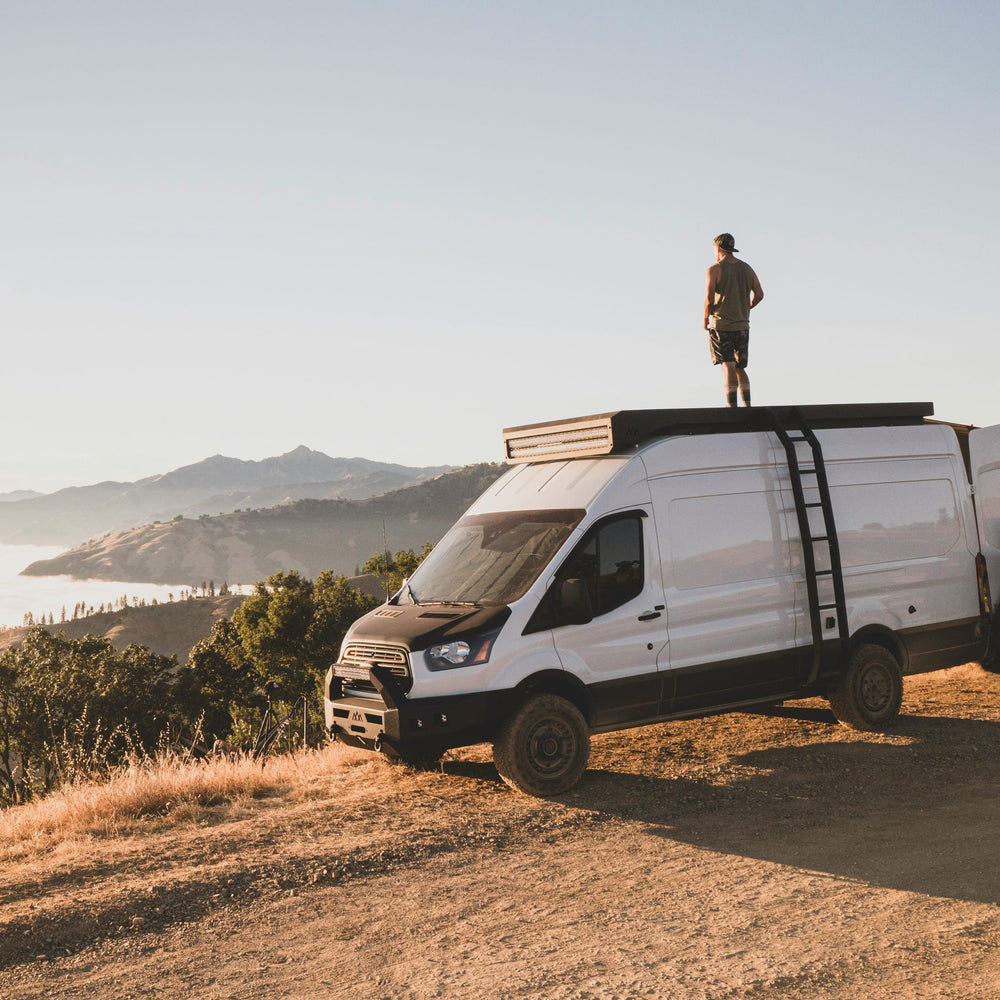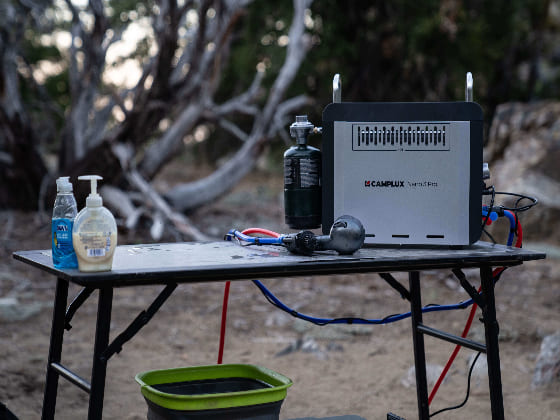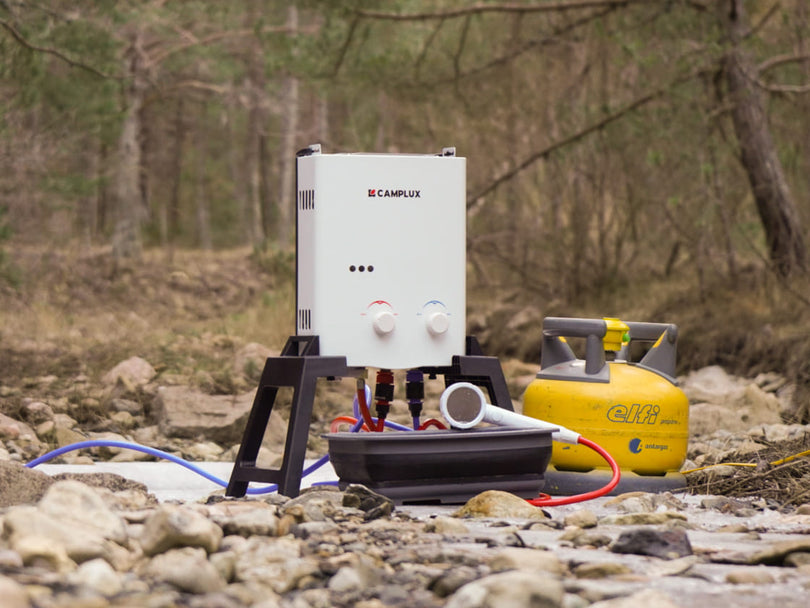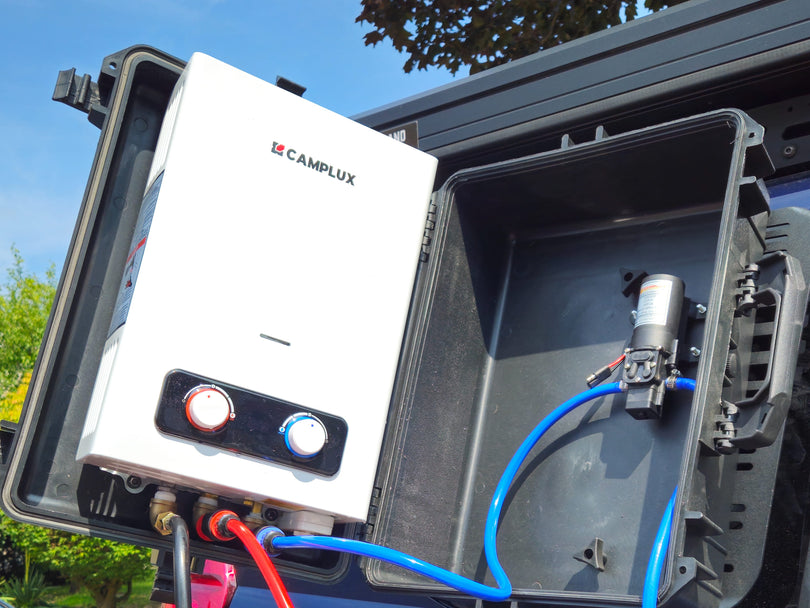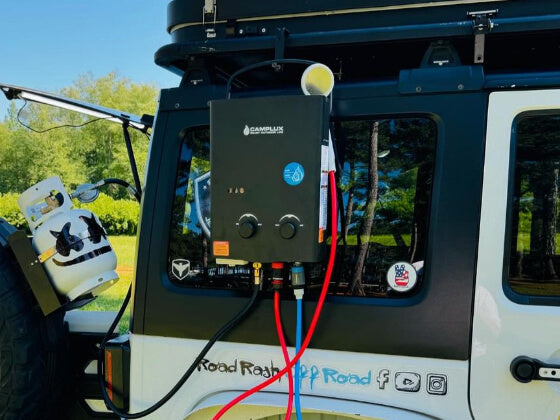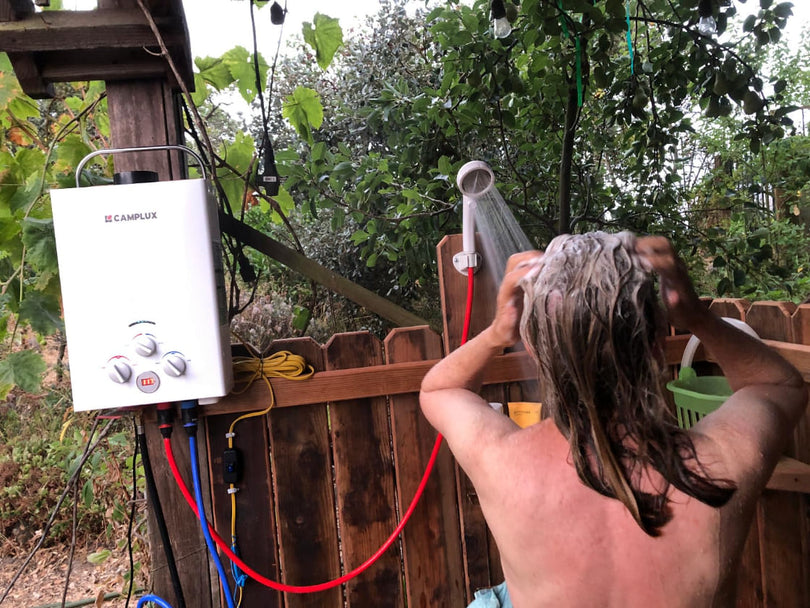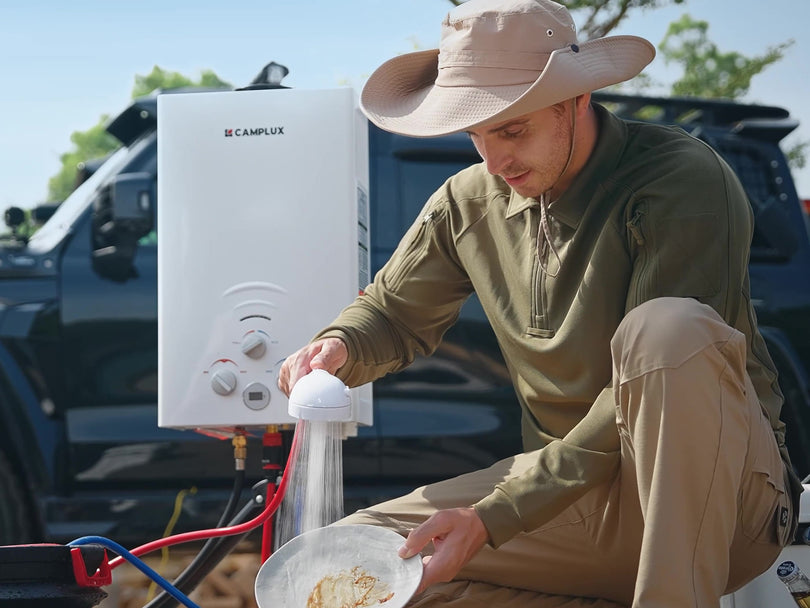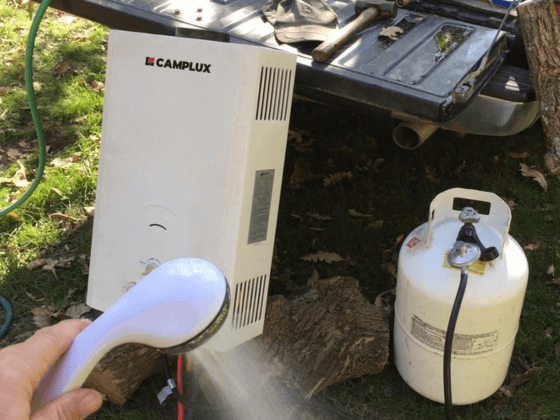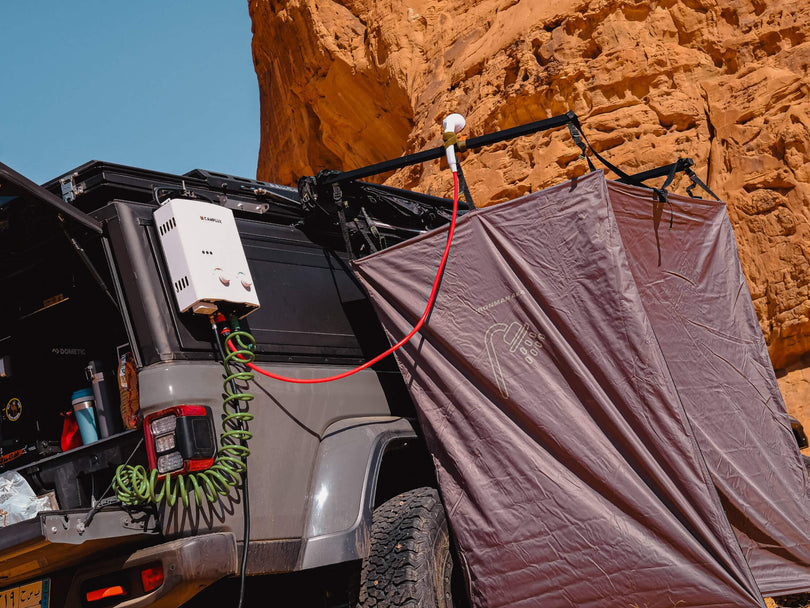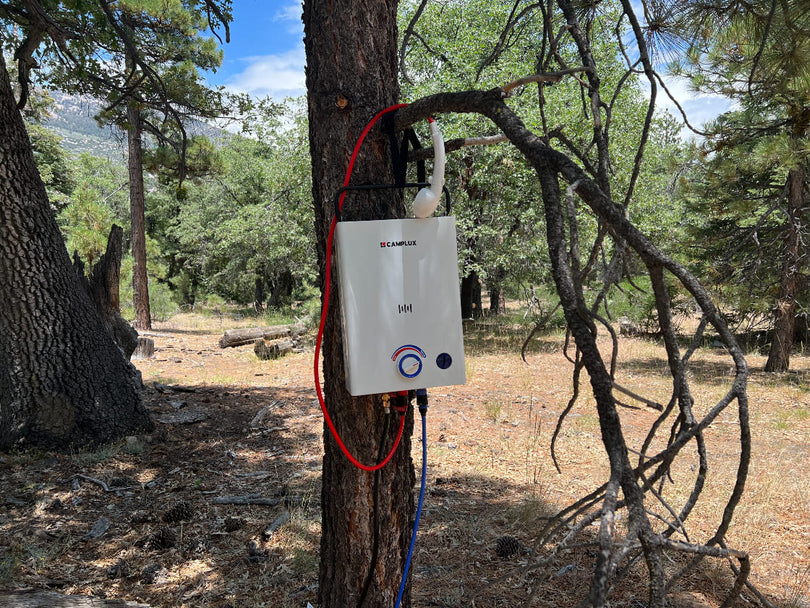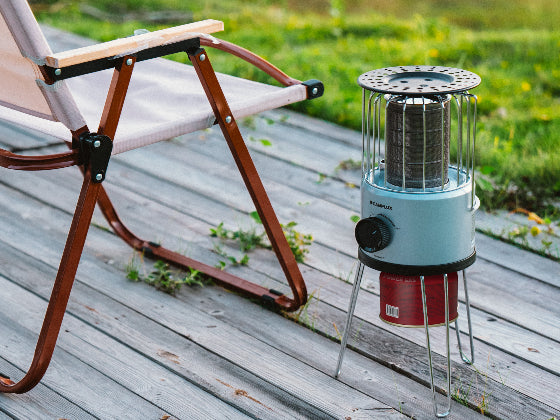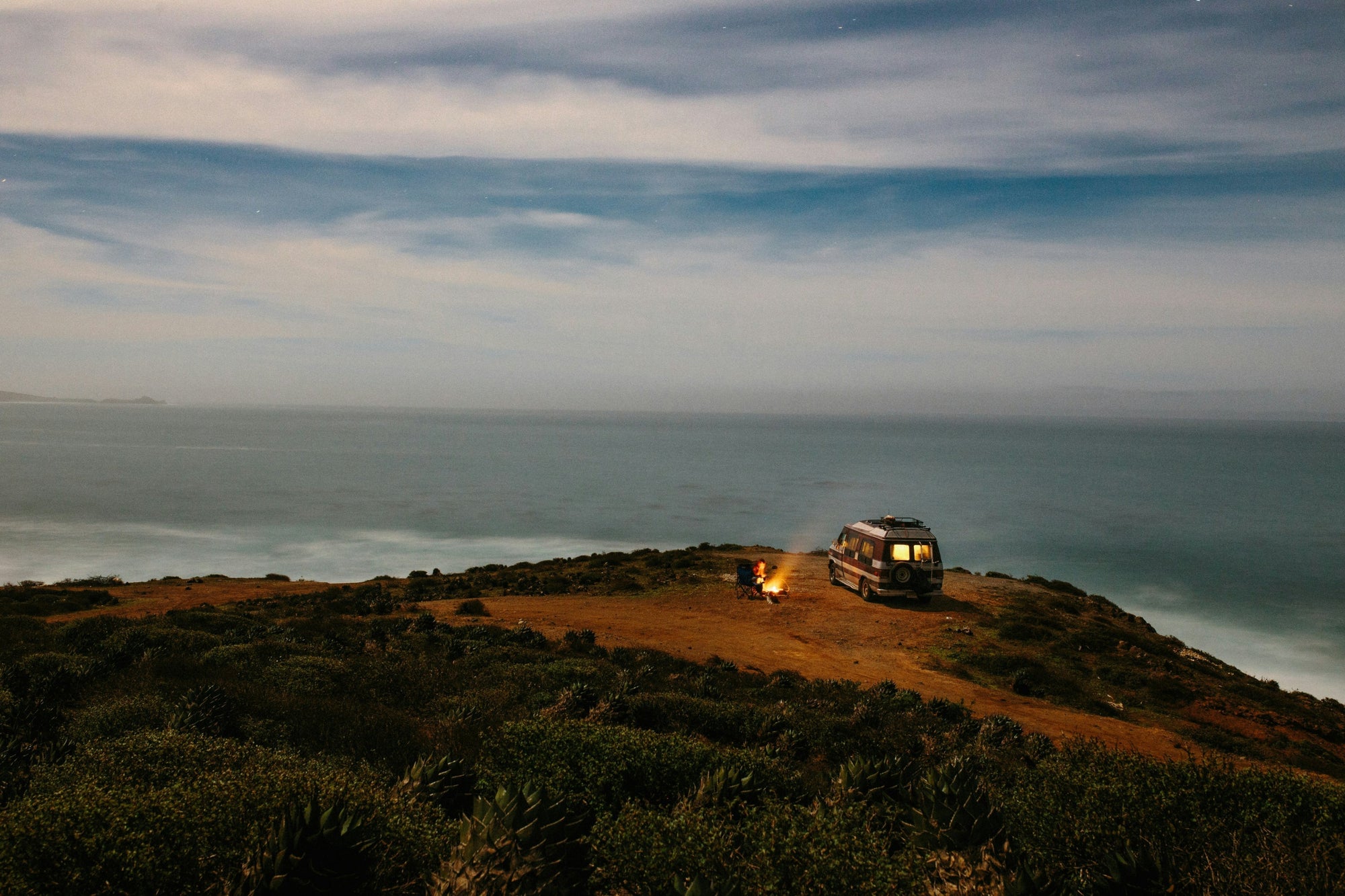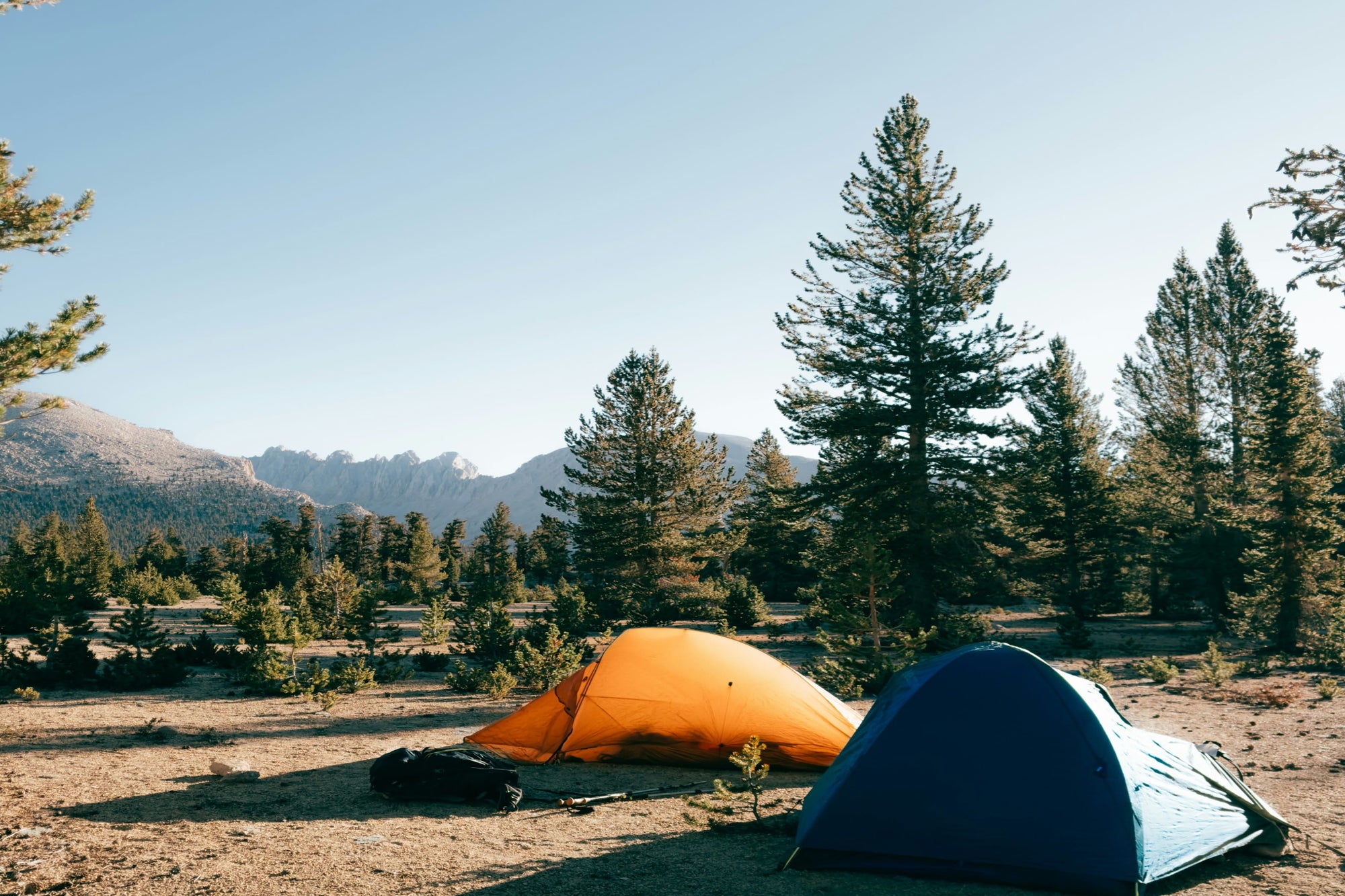If you love UK camping, caravan holidays, festival weekends or wild-swimming stopovers, a portable hot-water setup can turn “brisk” into “brilliant.” Camplux outdoor water heaters are designed for exactly these moments—quick showers after a muddy hike, washing up at a campsite, or rinsing off the dog before he jumps into the campervan.
This guide explains how to use Camplux heaters safely and confidently in the UK, with real-world tips for installation, operation and maintenance—plus pointers to related reads and products on camplux.uk.
Why safety matters (especially in the UK)
Portable gas water heaters are powerful, efficient and wonderfully convenient. They also produce heat and combustion gases, which means a few simple rules keep you and your crew safe:
-
Use outdoors only or in very well-ventilated, open-air spaces (e.g., under an awning with at least three fully open sides). Never use in enclosed tents, bathrooms, vans, sheds, garages or inside the caravan.
-
Stick with the correct gas type and pressure for the unit (UK portable LPG typically: butane ~28–30 mbar or propane ~37 mbar, depending on model/regulator).
- Keep clearances from flammables, manage wind exposure, and never leave a lit appliance unattended.
-
Always perform leak checks and adopt a simple shut-down routine.
-
Protect the appliance from rain ingress and freezing.
If you're new to setup and want a deeper walkthrough later, save these related reads:
Choose the right Camplux for your trip
Camplux offers a family of portable LPG units built for outdoor life—from solo hikers to family camps and remote cabins. Here are the UK-favourites people pair with caravans, campervans and campsites:
-
Camplux nano 3pro → Ultra-portable hot water for minimalist setups: View product ›
-
Camplux nano 3 max → “Micro-size, mighty convenience” with pump/handle for mobile use: View product ›
-
AY132B (5L) → Handy folding handle; great for campsite showers and washing up: View product ›
-
AY132MAX (5L) → Includes water pump & bag—ideal when your water source is an Aquaroll or jerrycan: View product ›
-
AY132P43 (5L) → With 4.3L water pump; smooth pairing with buckets/containers: View product ›
-
BW158BC (6L) → A touch more flow for families while staying portable: View product ›
-
BW264C (10L) → Higher output with rain cap; CE/GAR-focused design for bigger groups: View product ›
-
F10 PRO (10L) → With pump and portable handle; designed for 28–37 mbar UK LPG usage: View product ›
Shop the ranges:
Core safety rules for every Camplux portable heater
1) Outdoors & ventilation
-
Operate outside in free air. If using near a campervan/caravan, position the heater downwind and several feet away from walls, doors, windows, awnings, gazebos or tent fabric.
-
Never use in enclosed spaces or inside washrooms—carbon monoxide (CO) is odourless and deadly. Keep a battery CO alarm in your camping kit as a belt-and-braces precaution.
2) Gas cylinders, regulators & hoses
-
Check that the regulator and hose match your heater's requirement (UK LPG common setup: propane ~37 mbar, butane ~28–30 mbar).
- Inspect hoses and O-rings for cracks; replace anything aged or perished. Keep hose runs short, tidy and away from hot surfaces or sharp edges.
- Store cylinders upright on stable ground, in the open air, away from ignition sources. Close the valve whenever not in use.
3) Water supply & pump use
-
Many models include or pair with a 12V water pump (e.g., AY132MAX, AY132P43, F10 PRO, nano 3 max). Keep the intake filter clean, avoid running dry, and prime the pump if needed.
- Use clean containers (Aquaroll, jerrycan, barrel) and keep intake away from debris. A little pre-filter mesh goes a long way.
4) Start-up sequence (the safe routine)
- Set up in a level, open, sheltered-from-rain spot.
- Connect the water line and start water flow (pump on).
- Open the cylinder valve and check for leaks (see below).
- Set flame/temperature/flow knobs to low-medium to begin, then dial in comfort.
-
Test the outlet temperature with your hand before stepping under the shower—avoid scalding.
Leak check (every cylinder change):
Spray a soapy-water solution onto joints, regulator connection and hose ends. Bubbles = gas leak. Tighten, re-seat the connection or replace the faulty part. Never use a flame to test.
5) Clearances, wind & flame stability
-
Keep flammable items (awnings, towels, jackets, shampoo bottles) well away from the burner and exhaust.
-
Strong winds can cause flame instability; reposition behind a windbreak but never box the unit in.
6) Rain & splash protection
-
Use models with a rain cap (e.g., BW264C) or ensure an open-sided canopy keeps the unit dry from direct rain while maintaining abundant airflow.
- Do not spray the heater body with water; avoid puddling around the base.
7) Shut-down & cool-down
-
Turn gas off at the cylinder first to let the flame go out, then power down the heater and pump.
-
Allow the unit to cool fully before moving or storing.
Scald protection & family use
-
Start with lower flame/temperature and higher water flow, then adjust gradually.
- Supervise children and elderly users; test temperature at the shower head first.
-
Consider mixing to a comfortable 37–40 °C feel rather than chasing maximum heat.
Winter, frost & UK shoulder seasons
Britain's weather loves surprises. If frost is possible:
-
Drain the heater after every use by opening the drain plug and briefly running pump/flow to purge water from the heat exchanger.
-
Store the unit dry and upright in a frost-free place.
- Before first use in spring, check all seals/hoses and give the burner intake a quick dust-off.
For a comprehensive cold-weather plan, save this guide for later:
Product-specific tips (camping, caravans & vanlife)
Camplux nano 3pro / nano 3 max
Tiny footprint; brilliant for solo campers or minimalist van-lifers who want quick rinses and dish-washing. Pair with a Camplux pump or use the nano 3 max with its included pump/handle for super-portable setups.
Shop: nano 3pro | nano 3 max
AY132 Series (AY132B / AY132MAX / AY132P43) – “5-litre class”
A UK favourite for campsite showers. The AY132B keeps it light with a folding handle. The AY132MAX and AY132P43 include a 4.3 L water pump, making them ideal when your water source is a jerrycan or Aquaroll. Great balance of output and portability for couples or small families.
Shop: AY132B | AY132MAX | AY132P43
BW158BC (6-litre class)
A little more flow for families still wanting a portable footprint. Ideal for camps with multiple quick showers and washing up.
Shop: BW158BC
BW264C (10-litre class) & F10 PRO (10 litres)
When you've a larger crew or want more comfortable flow, step up. The BW264C includes a rain cap and is designed with CE/GAR considerations in mind. The F10 PRO ships with pump and a handle and is compatible with UK LPG pressures (28–37 mbar). Both are excellent for group camps and off-grid cabins (still outdoors, of course).
Shop: BW264C | F10 PRO
A quick UK-style installation checklist
-
Pick the spot: Outside, level, clear of flammables, sheltered from direct rain but open on (at least) three sides.
-
Mount securely: Use a stand/hook; keep the exhaust clear and upright.
-
Gas connection: Correct cylinder + regulator (28–30 mbar butane / 37 mbar propane as applicable), tight joints, leak-tested with soapy water.
-
Water line: Connect pump/intake, keep filter clean, prime if needed.
-
First fire-up: Water on first, gas on next, low settings to start. Check water temperature and stability.
-
After use: Gas off at cylinder, run flame out, power down, drain if frost risk.
Want a full walkthrough? Save these for later reading:
Troubleshooting on the pitch
-
Won't ignite: Check cylinder valve, regulator seated, battery (if your model uses one), pump primed, adequate water flow. Wind shielding (without enclosing) can help.
-
Flame goes out: Increase flow slightly, reduce wind exposure, verify gas pressure, clean the shower head filter.
-
Water too hot/cold: Balance flame vs. flow: lower flame & higher flow reduces temperature; higher flame & lower flow increases it.
-
Suspected leak: Turn the cylinder off immediately, move the unit away from ignition sources, ventilate outdoors, and perform a thorough soapy-water test before next use. For more guidance, see: What to Do in Case of a Gas Leak from Your Water Heater.
Care, maintenance & off-season storage
-
Wipe down after trips; keep burners and intake grills dust-free.
-
Descale gently if you camp in hard-water areas.
-
Drain thoroughly before storage; store upright in a dry, frost-free place.
-
Annual check-over: Replace aged hoses and washers; verify regulator performance and re-check all fastenings.
More care tips here: Routine Maintenance Tips for Camplux Outdoor Water Heaters and How to Drain and Store Your Camplux Water Heater During Off-Season.
CE/GAR, UK regs & common-sense compliance
Camplux designs its outdoor portfolio with UK/EU standards in mind (you'll see CE/GAR references on relevant models/pages). Your part:
-
Use the heater as intended (outdoors).
- Follow the manual for gas connections, clearances and operation.
-
If in doubt about LPG hardware (regulators, permanent caravan systems), consult a Gas Safe professional.
Read more: Understanding UK Regulations for Outdoor Water Heater Installation and Understanding CE Certification for Outdoor Water Heaters.
FAQs (quick answers before you hit the road)
Can I use a Camplux heater inside my campervan bathroom?
No. These appliances are for outdoor use only or extremely well-ventilated open-air spaces. Keep combustion products safely outside.
Which gas should I use?
Follow your model manual and regulator spec. In the UK, portable setups commonly use propane (~37 mbar) year-round or butane (~28–30 mbar) in warmer months. Always match the regulator to the cylinder and the heater spec.
Do I need a pump?
If you draw water from a container rather than a mains tap, a 12V pump (e.g., included with AY132MAX/AY132P43/F10 PRO) is ideal.
How do I avoid scalding?
Start low, increase heat gradually, and test with your hand. Supervise children. Good flow + moderate flame = comfortable temperatures.
What about winter?
Drain after use, store in a frost-free spot, and see our cold-weather guides linked above.
Ready to build your outdoor hot-water kit?
For deeper dives, don't miss these highlighted reads:
Final word
With a sensible setup and a simple safety routine, Camplux heaters turn UK adventures into “home-comfort outdoors.” Follow the guidelines above, choose the right model for your crew, and you'll enjoy hot water—rain or shine (this is Britain, after all).

